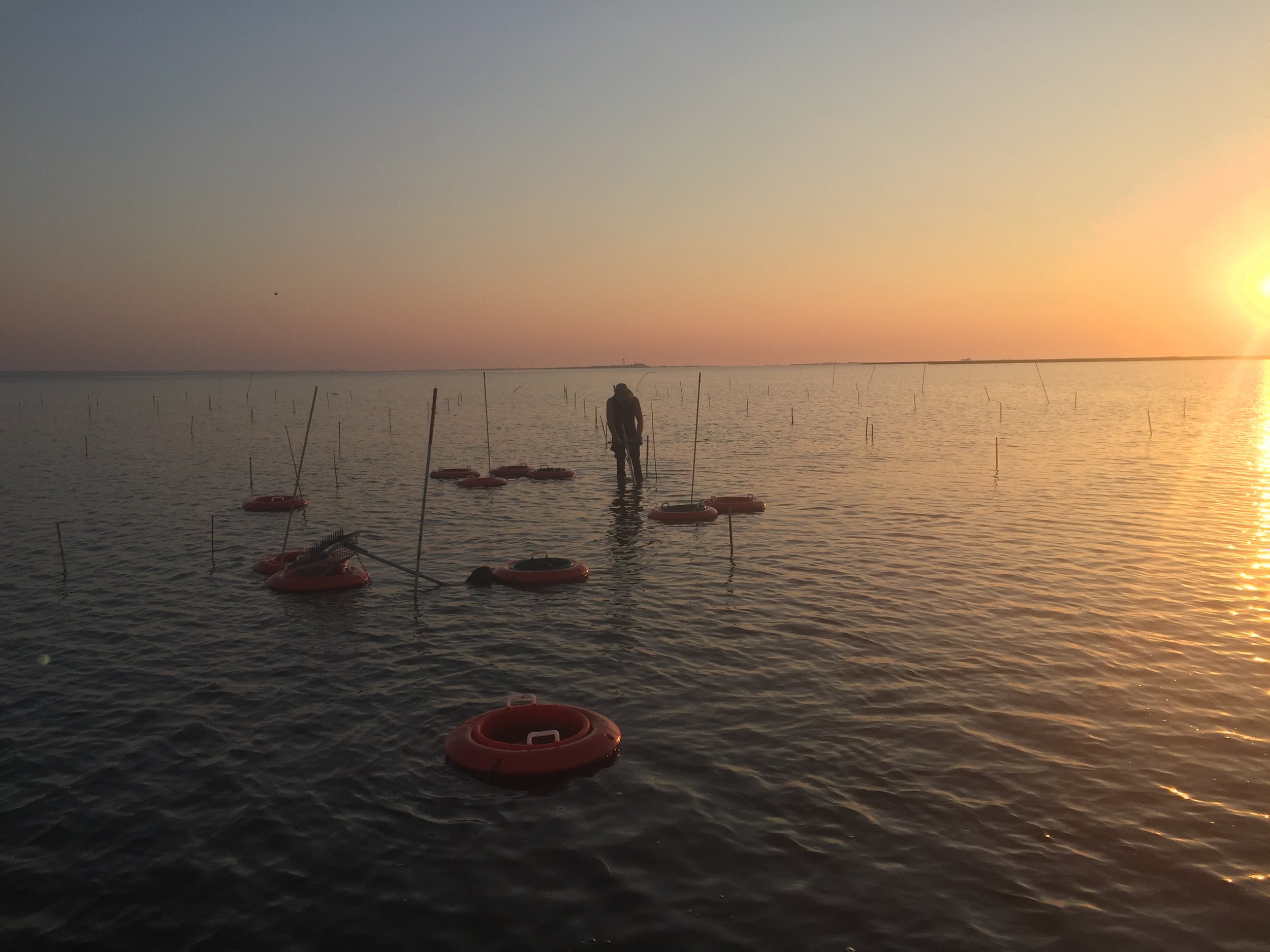clam farming and aquaculture
A majority of shellfish that is sold in the United States is farm-raised. Shellfish populations have suffered dramatic decreases due to over-harvest. Farming or Aquaculture provides a sustainable alternative to continued harvest of wild shellfish. In New Jersey oyster farming has been done for over a century. Growers would take wild seed (young) oysters and put them in locations in the bay that would allow them to grow quickly or to hide them from other fishermen. They also did this with hard clam seed (quahogs). In the late 1800's Rutgers University hired a biologist (Julius Nelson) that would lead the way for oyster aquaculture research. He established experimental research laboratories in Tuckerton, NJ. His son Thurlow Nelson continued his father's research after his death. Thurlow fought legislation in order to protect waterways that supported shellfish populations in New Jersey. By the 1950's Harold Haskin took charge of the laboratory and extended the research to include spawning and rearing Hard Clams. Haskin also worked on developing disease resistant oysters.
Today shellfish aquaculture is more important than ever. Wild populations cannot support market demand on their own. Once abundant in East Coast bays and waterways, natural populations of clams and oysters are now few and far between. The livelihood of many relies on this resource, and many of which inherited the Baymen lifestyle from generations before them. Most wild clammers and oystermen in New Jersey have reestablished themselves as shellfish farmers. Shellfish farming is economical, sustainable, and benefits the environment.
Oysters and Clams are bivalves. They feed on microscopic organisms called plankton by continually siphoning water into their bodies and filtering particles out with their gills. Filtered water is then redirection back out of the bivalve. In a sense oysters and clams are capable of cleaning the water by removing excess nutrients that pollute many costal waterways. They also improve water clarity which in conjunction with a decrease in excess nutrients (which allows for the growth of macro algae which may smother the bay bottom) allows for the growth of seagrass. Seagrasses such as eelgrass serves as a vital habitat to many fish and invertebrate species as well as converts dissolved carbon dioxide into dissolved oxygen through photosynthesis. Shellfish have evolved to serve a significant role in coastal ecosystems and with their decrease, everything else has suffered.

